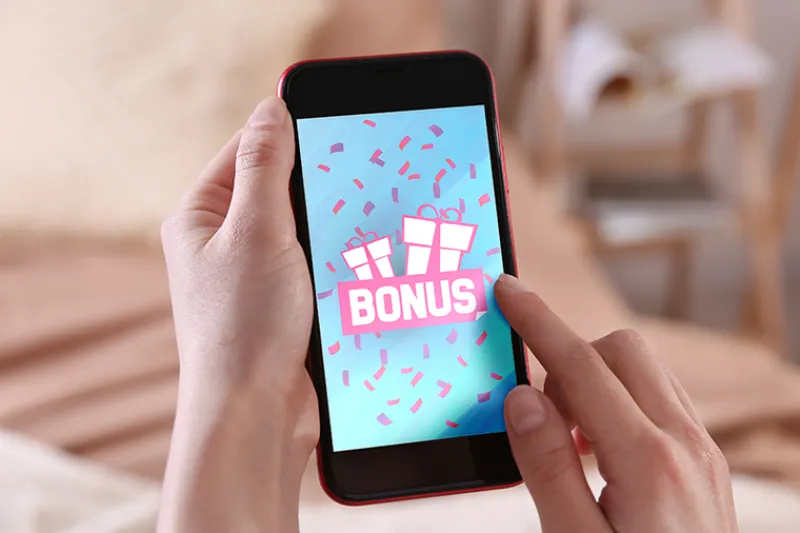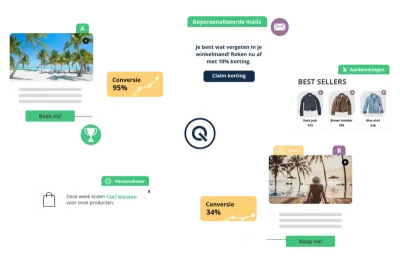In today's competitive retail market, a standard savings program is no longer enough to engage customers and drive loyalty. Customers now expect more than ever: personalized experiences, tailored benefits and targeted communications that motivate them to return. It is time for retailers to think about more sophisticated loyalty programs's that go beyond simple discounts or loyalty points. What do customers really need to feel valued and engaged? The answer lies in a dynamic system that activates and motivates them at the right times - based on their unique buying behaviors and preferences.
The changing expectations of customers
In recent years, digitization has dramatically changed consumer behavior. Customers have access to an unprecedented amount of information and are more than ever able to compare prices, products and offers. So to keep customers loyal, you have to compete not only on price or assortment, but also on valuable and personalized experiences.
A good loyalty program nowadays goes far beyond simply collecting points or offering a discount on the next purchase. It's about understanding your customer, recognizing patterns in their purchase behavior and offering the right incentives at the right times.
The importance of personalized offers
Personalized offers are important to keep customers active and engaged. By using data analytics tools, retailers can monitor customers' purchasing behavior and respond accordingly. This enables companies to provide relevant offers and recommendations tailored to a customer's personal preferences. For example:
Purchasing behavior: If a customer regularly buys certain products, the loyalty program may reward them with discounts on those products or similar items.
Seasonal offers: Customers can get exclusive deals on products relevant to their usage patterns, such as clothing for the upcoming season or accessories for a previously purchased product.
Segmentation: Customers can be divided into different segments based on their purchase history and preferences. Each segment can receive personalized rewards that best suit their needs.
Motivation through exclusive benefits and rewards
Another aspect of a modern loyalty program is offering exclusive benefits to members. This is not only about financial benefits, but also about creating a feeling of exclusivity and appreciation. Examples of exclusive benefits can include:
- Early access to new products: Customers may have the opportunity to purchase new products before they are available to the general public.
- Access to special events: Think invitations to exclusive shopping events, online webinars or private sales.
- Loyalty levels: By implementing a tiered system (e.g. Silver, Gold, Platinum), customers can feel more committed to the program. The higher they move up the ladder, the more exclusive benefits they get, such as free shipping, personal styling advice or reserved products.
Activate customers at the right time
The success of a loyalty program also depends on its ability to activate customers at the right time. This means retailers must have a detailed understanding of their customers' buying behavior and proactively target them when they are ready to make another purchase. A Customer Data Platform (CDP) plays a crucial role in this. A few ways to activate customers:
- Reminders: Send targeted emails or notifications to remind customers of products they have viewed or an abandoned shopping cart, along with an attractive offer to win them back.
- Birthdays or special occasions: Offer customers a special offer or discount on their birthday, or celebrate special holidays or moments together with exclusive deals.
- Repurchases: If a customer has purchased a product that will run out soon (for example, a beauty product or stock for a specific season), you can send a reminder with an offer to purchase this product again.
Data-driven decisions: the foundation of success
The power of an advanced loyalty program lies in the use of data. By collecting and analyzing customer data, retailers can gain insight into their customers, their preferences and their behavior. This enables them not only to create relevance, but also to continually optimize and adjust their programs.
- Purchase behavior analysis: By tracking what products customers buy and how often they return, you can predict what they may need or want to buy in the future.
- Customer interactions on social media: Tracking customer interactions on social media channels can provide valuable insights into what they like, what they talk about and what their needs are.
- Customer Feedback: Actively collecting feedback not only helps to improve the program, but also shows that the retailer values customer opinion.
Conclusion: The Future of Loyalty in Retail
Customers have ever-higher expectations brands and retailers, which is why it is more important than ever to invest in personalized experiences. Retailers that look beyond the standard savings program and actually offer customers valuable, relevant and exclusive benefits will be better able to build long-term customer relationships. A dynamic, data-based loyalty program that motivates customers to return at the right time is therefore the key to success in the modern retail world.


